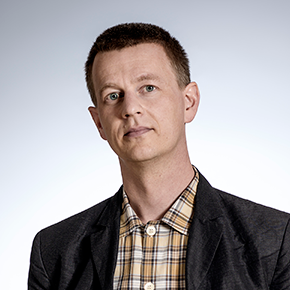The Move To The Car-friendly City: How Did It Happen and What Can Be Learned

Time: Tue 2022-11-15 08.30 - 09.30
Location: ITRL, Drottning Kristinas väg 40 & On Zoom
Video link: Zoom (register for link)
During the 1950s the number of cars in Sweden increased almost fivefold and the country attained the highest level of car ownership per capita in Europe. The rise and establishment of mass motoring was dramatically illustrated by the violent encounter between the car and the city. Despite the fact that congestion and road accidents were well-known, everyday occurrences, reached previously unimagined heights through the growth of mass motoring. Per Lundin focuses on the emergence of a group of planning experts as the key advocates of the idea of the “car society” as the solution to these problems. By fully adapting society to the car it would be possible to eliminate congestion and road accidents, continuing the advance of the car. This ideal, which originated in the United States, became the goal and the dream of these experts.

Lundin investigates to what extent the actions and the ideologies of the experts interacted with the advent of mass motoring and the extensive urban building during the post-war period. In order to answer this question Lundin analyzes, firstly how the planning experts laid claim to the problems of congestion and road accidents, thereby restating them as exclusive planning problems, secondly how guidelines for a car-conscious planning of cities and communities were developed based on the formulation of this problem and thirdly how, and to what extent, the guidelines and standards were implemented in the town planning process.
The dreams about a Swedish society entirely adapted to the car by and large were realized. One important explanation of the fact that the physical adaptation of cities and societies to the car could proceed so quickly, on such a large scale and in similar forms all over the country, is found in the planning rules developed by the experts. The rules were the embodiment of the untroubled and unreflecting dreams nourished by the planning experts of the 1950s and the 1960s. Through the rules these ideological conceptions were reinforced and disseminated in a manner almost unable to stop. As the rules quickly were integrated with the planning instruments of administrative bodies locally, regionally and nationally, they set the tone for the extensive urban renewal of the following decades.
Per Lundin is Professor of History of Technology at Chalmers University of Technology. He received his PhD in History of Technology from the Royal Institute of Technology in Stockholm. His published dissertation, Bilsamhället (The Car Society, Stockholmia förlag, 2008), was awarded the Johan Nordström and Sten Lindroth Prize for outstanding scholarly work in the history of ideas. In 2012, he was appointed docent in Economic History at Uppsala University.
Currently, he researches the role of military research institutes as knowledge producers in Cold War Sweden and prepares a new research project on the political economy of the Swedish shopping centre. Per Lundin’s books in English include Science for Welfare and Warfare: Technology and State Initiative in Cold War Sweden, co-edited with Niklas Stenlås and Johan Gribbe (Science History Publications, 2010), Computers in Swedish Society: Documenting Early Use and Trends (Springer, 2012), and The Making of European Consumption: Facing the American Challenge, co-edited with Thomas Kaiserfeld (Palgrave Macmillan, 2015).
Registration
The web form is closed. Contact maldan@kth.se if you wish to be added.
